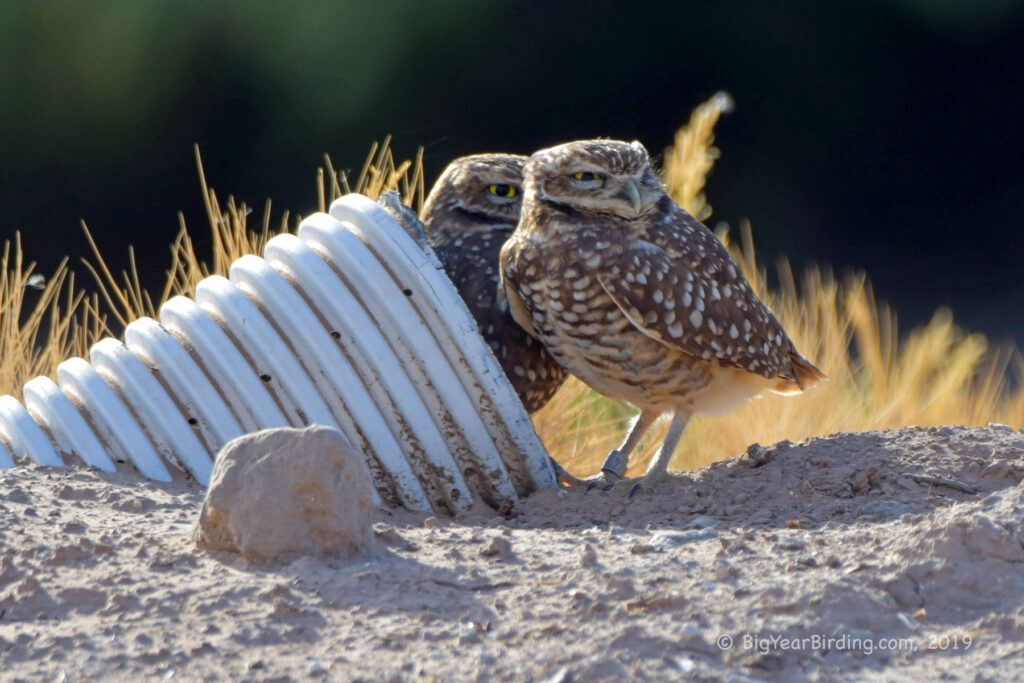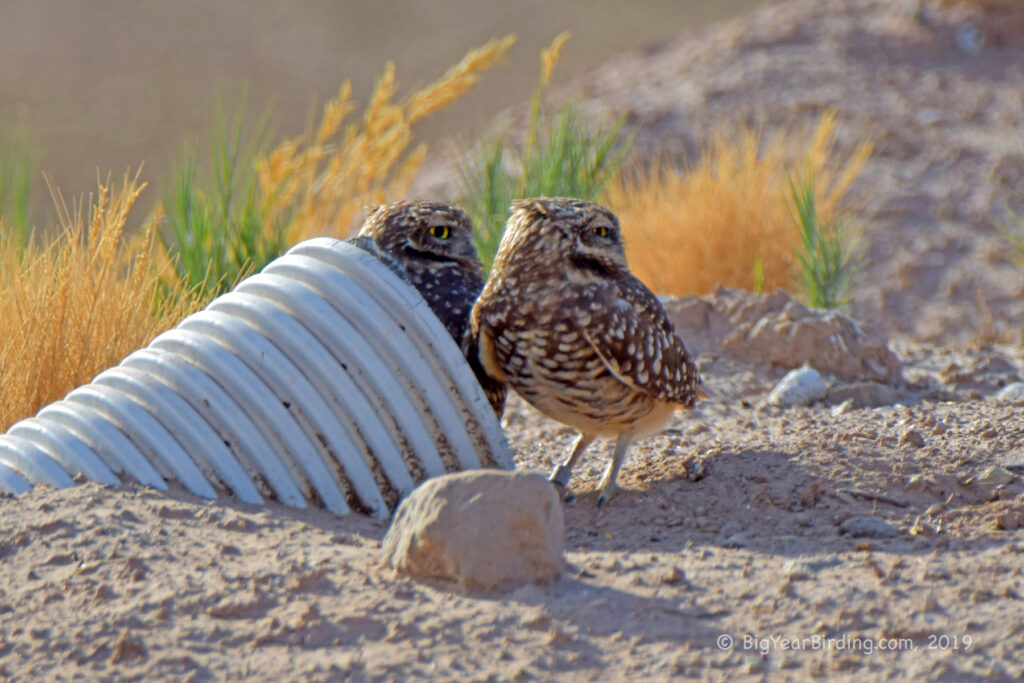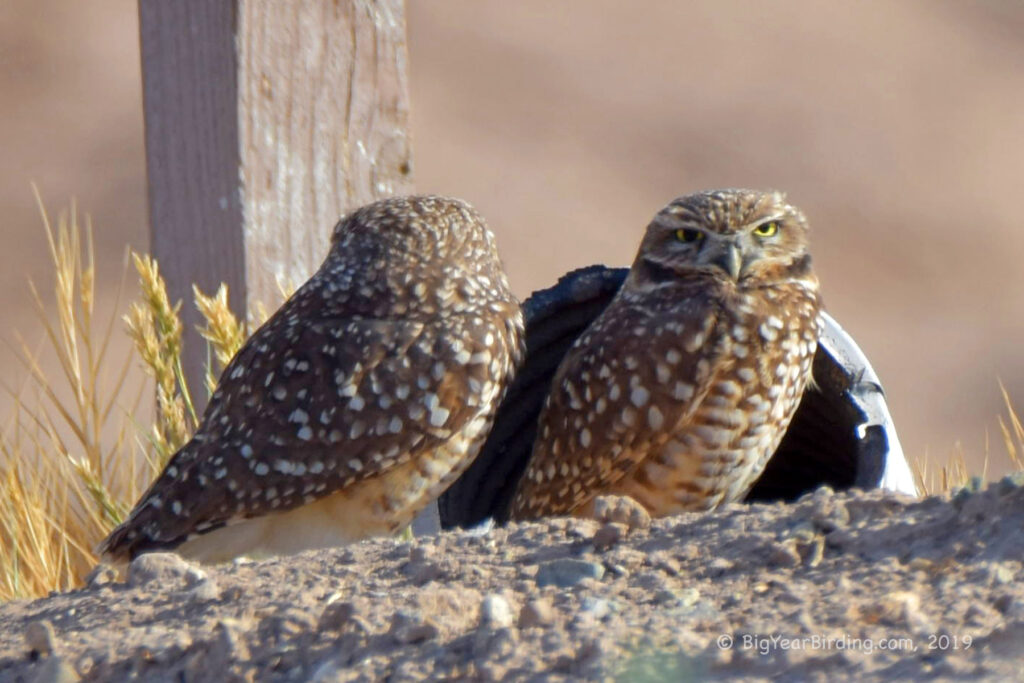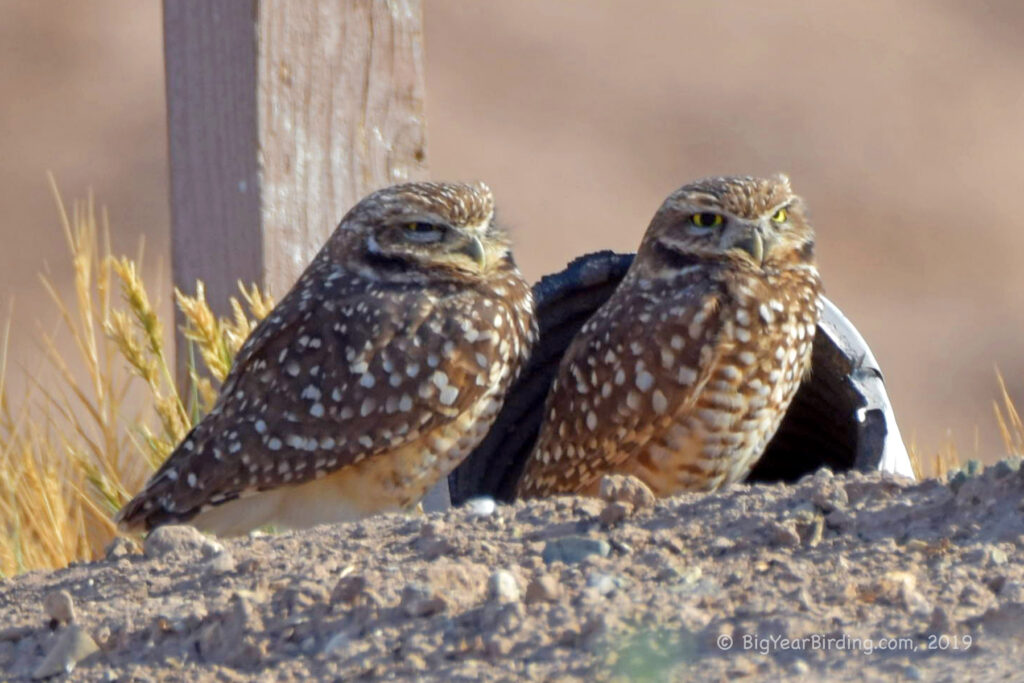The Burrowing Owl (Athene cunicularia) is a small, ground-dwelling owl found in North and South America. Adults measure about 7.5 to 9 inches (19 to 23 cm) in length and weigh between 4.9 and 8.5 ounces (140 to 240 grams), making them one of the smallest owl species in North America. They have a round head with no ear tufts, a white eyebrow stripe, and bright yellow eyes. Their long legs and short tail make them easy to identify in the field.

Burrowing Owls are known for their unique behaviors and habitat preferences. Unlike many other owl species, they are active during the day and at night, making them easier to spot. They also live in underground burrows, which they dig themselves or take over from other animals. These burrows can be up to 10 feet (3 meters) long and provide protection from predators and extreme temperatures. In addition to digging their own burrows, Burrowing Owls will also use man-made structures such as pipes, culverts, and abandoned buildings as nests.
Burrowing Owls are non-migratory in some parts of their range, while in other areas they migrate to avoid harsh winter conditions. In North America, populations in the northern part of their range (such as Canada and parts of the United States) will migrate south to Mexico and Central America for the winter. In the southern part of their range (such as South America), Burrowing Owls are non-migratory and can be found year-round.

One of the most distinguishing field marks of Burrowing Owls is their behavior. They are often seen perched on the ground or on low structures such as fence posts or rocks, and they will bob their head up and down in a distinctive manner. They are also known for their high-pitched calls, which sound like a series of coos and clucks. Their plumage is generally brown with white speckling on the breast and belly, although some individuals may have more gray or reddish tones.

Despite their small size and non-threatening appearance, Burrowing Owls face a number of threats in the wild. Habitat loss, pesticide use, and predation by domestic cats and dogs are some of the biggest challenges they face. However, efforts to conserve this species are underway, including habitat restoration and the creation of artificial burrows to help support their populations.

